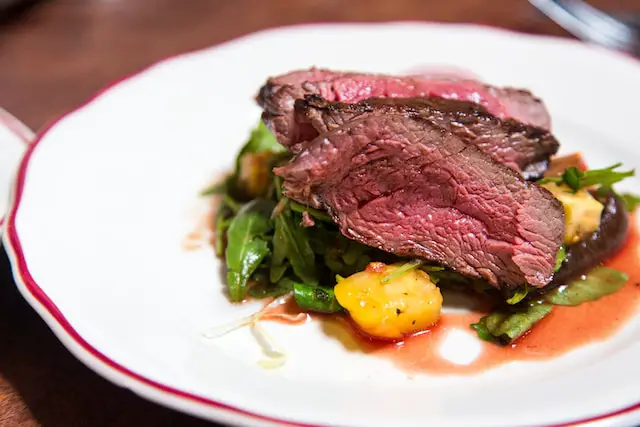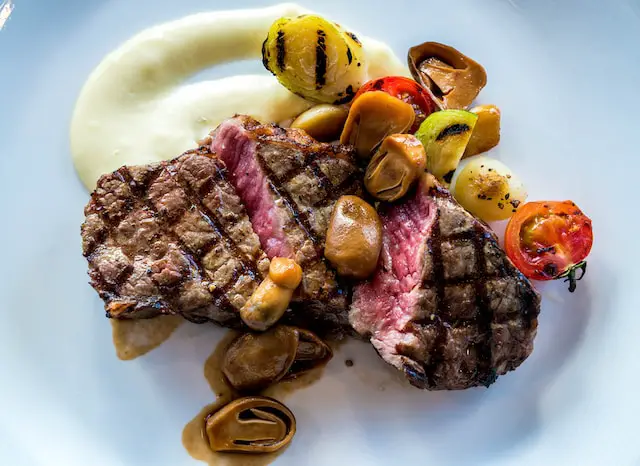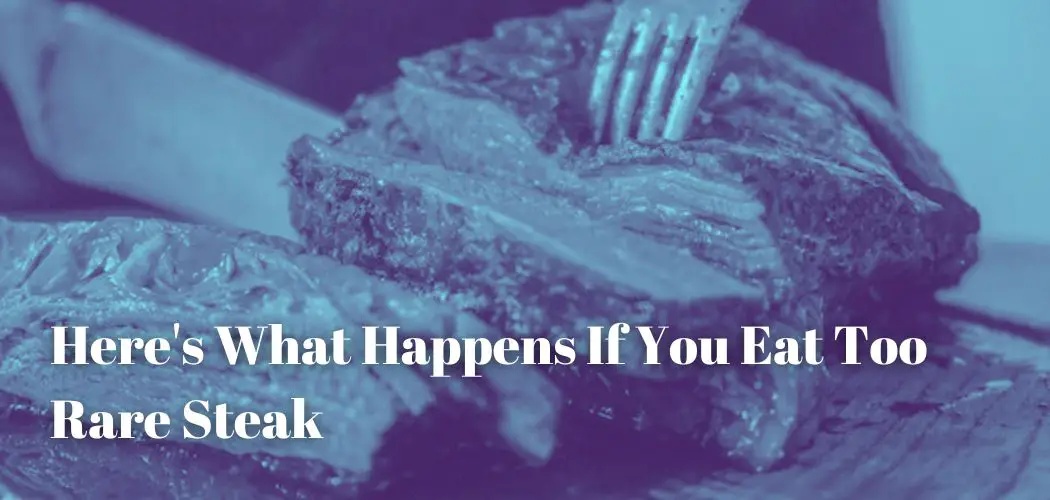Steak is a popular food item that is enjoyed by many people around the world. While some people prefer their steak well-done, others prefer it rare.
However, eating rare steak can pose certain health risks. In this article, we will discuss what happens if you eat a too-rare steak.
Firstly, it is important to understand what a rare steak is. Rare steak is a steak that is cooked at a low temperature for a short period of time, resulting in a red and juicy center.
Some people believe that a rare steak is more flavorful and tender than a well-done steak.
However, a too rare steak can be risky to eat because it may contain harmful bacteria that can cause foodborne illnesses.
When steak is not cooked to the proper temperature, harmful bacteria such as E. coli and Salmonella can survive and cause food poisoning.
Food poisoning can cause a range of symptoms, including diarrhea, vomiting, stomach cramps, and fever.
These symptoms usually appear within a few hours to a few days after eating contaminated food. In severe cases, food poisoning can lead to dehydration, kidney failure, and even death.
Contents
Listeria
While listeria is most usually transmitted by infected ready-to-eat foods, it can also be caused by undercooked steak, pork, poultry, or seafood. The most typical symptoms include fever and muscular pains, although listeria might also cause diarrhea and nausea.

Pregnant women need to be extra careful to prevent having listeria, as it can cause miscarriage or other grave issues, and pregnant women are 20 times more likely to have listeria than non-pregnant women, according to the Centers for Disease Control and Prevention.
Trichinosis
Another risk of eating a too rare steak is the possibility of contracting a parasitic infection called trichinosis. Trichinosis is caused by a type of roundworm that is commonly found in undercooked pork and other meats such as bear and wild boar.
However, it can also be found in rare or undercooked beef. The symptoms of trichinosis include nausea, diarrhea, abdominal pain, and fever. In severe cases, trichinosis can cause muscle pain, swelling, and even death.
E.Coli
E. coli (Escherichia coli) is a type of bacteria that is commonly found in the intestines of humans and animals. While some strains of E. coli are harmless, others can cause foodborne illnesses.
When meat such as steak is not cooked to the proper temperature, harmful bacteria like E. coli can survive and cause food poisoning.
E. coli can contaminate meat during the butchering process if the animal’s intestines come into contact with the meat. E. coli can also be found in animal feces, so if the meat is not handled properly, it can become contaminated with the bacteria.
The symptoms of E. coli food poisoning can vary but can include diarrhea, abdominal cramps, and fever. In severe cases, E. coli infections can cause bloody diarrhea, dehydration, and kidney failure.
People with weakened immune systems, young children, and the elderly are at higher risk of developing severe complications from an E. coli infection.
Salmonella
Consuming raw or undercooked chicken or red meat increases the risk of salmonella infection. During the first 12 to 72 hours after ingesting contaminated food, symptoms like stomach pains, fever, and diarrhea appear.

According to the U.S. Department of Agriculture, these symptoms can continue for up to a week and may be severe enough to cause death if you have a damaged immune system.
How To Reduce The Risk Of Foodborne Illnesses?
To reduce the risk of foodborne illnesses, it is important to cook meat to the proper temperature.
The United States Department of Agriculture (USDA) recommends cooking beef to an internal temperature of at least 145°F (63°C) for steaks and roasts. Ground beef should be cooked to an internal temperature of at least 160°F (71°C).
Is It Safe To Over Consume?
Overconsuming rare steak can pose some risks to your health.
While moderate consumption of red meat can be part of a healthy diet, consuming large amounts of any type of meat can increase your risk of health problems such as heart disease, certain cancers, and type 2 diabetes.
In addition, rare steak can carry a risk of bacterial contamination if it is not cooked to the proper temperature.
Consuming large amounts of undercooked or raw meat can increase your risk of contracting a foodborne illness, which can cause symptoms such as diarrhea, nausea, vomiting, and abdominal pain.

Eating large amounts of red meat, including rare steak, can also have an impact on your digestive system.
Red meat is high in fat and protein, which can be difficult for your body to digest in large quantities. This can lead to digestive problems such as constipation, bloating, and stomach cramps.
Furthermore, overconsuming rare steak can also contribute to the development of iron overload, a condition in which the body accumulates too much iron. Iron overload can lead to serious health problems, including liver damage, heart disease, and diabetes.
It is important to consume red meat, including rare steak, in moderation as part of a balanced diet. The American Heart Association recommends limiting red meat consumption to no more than 1-2 servings per week.
Additionally, it is important to cook meat to the proper temperature to reduce the risk of bacterial contamination.
Conclusion
While a rare steak may be delicious, it can pose certain health risks if not cooked properly. Eating an undercooked steak can lead to foodborne illnesses such as E. coli and Salmonella, as well as parasitic infections such as trichinosis.
To reduce the risk of these illnesses, it is important to cook meat to the proper temperature and to practice good food safety habits.

